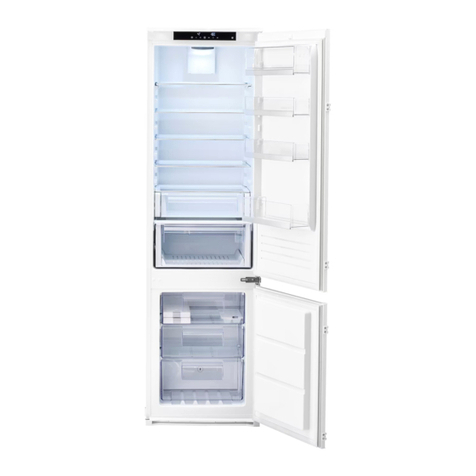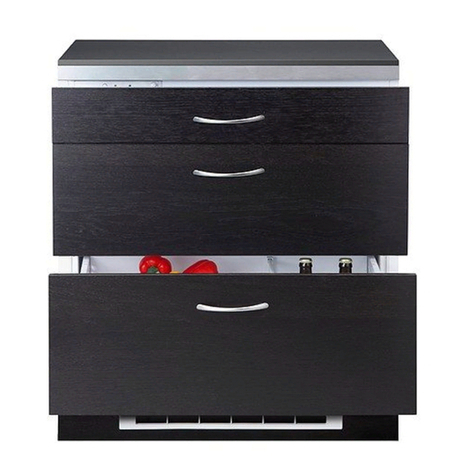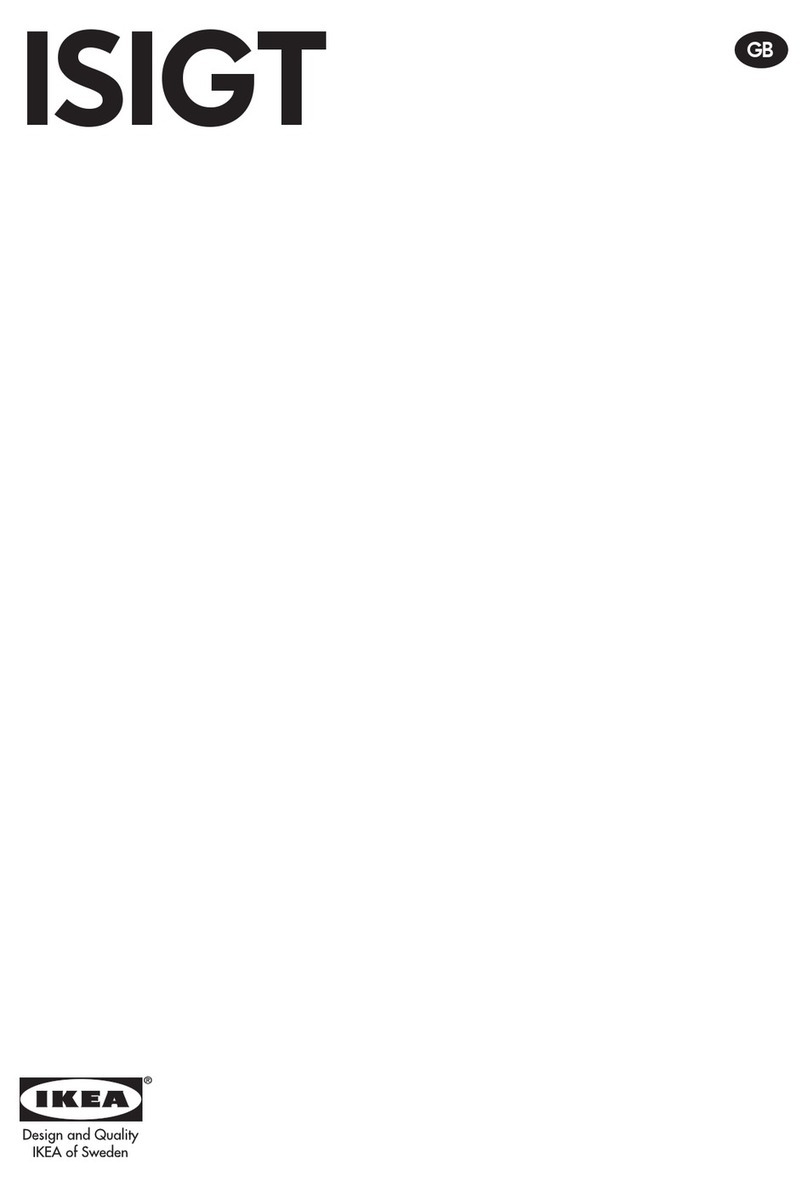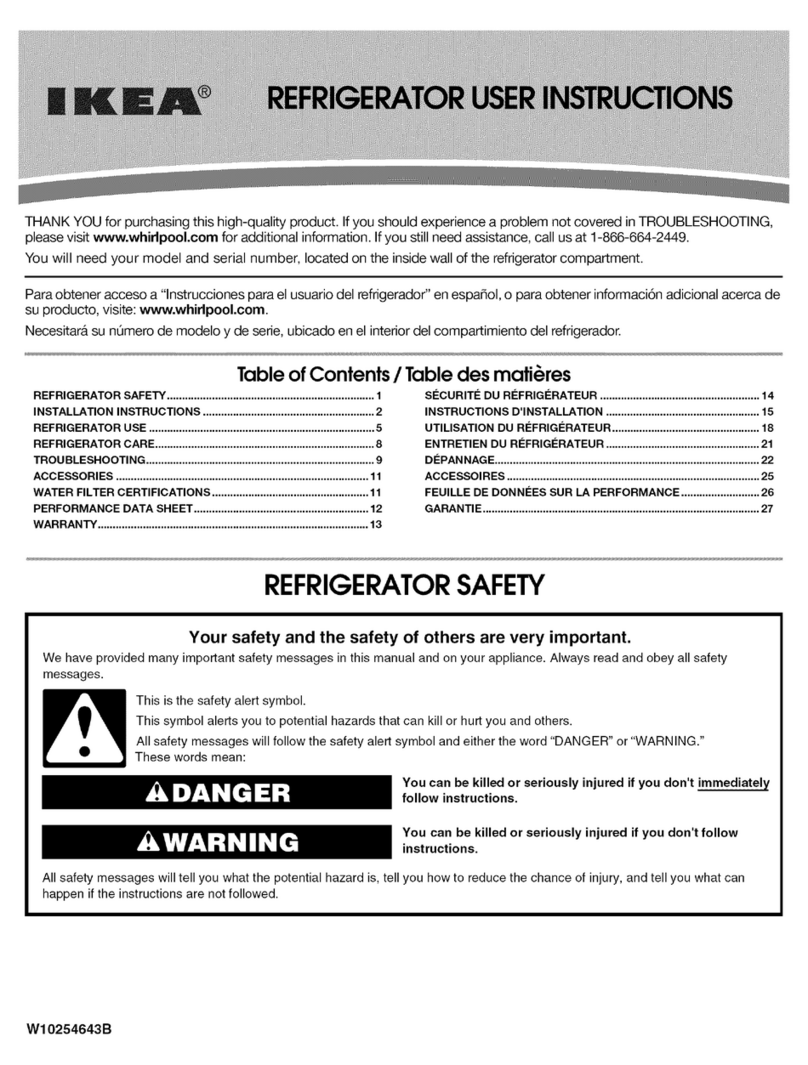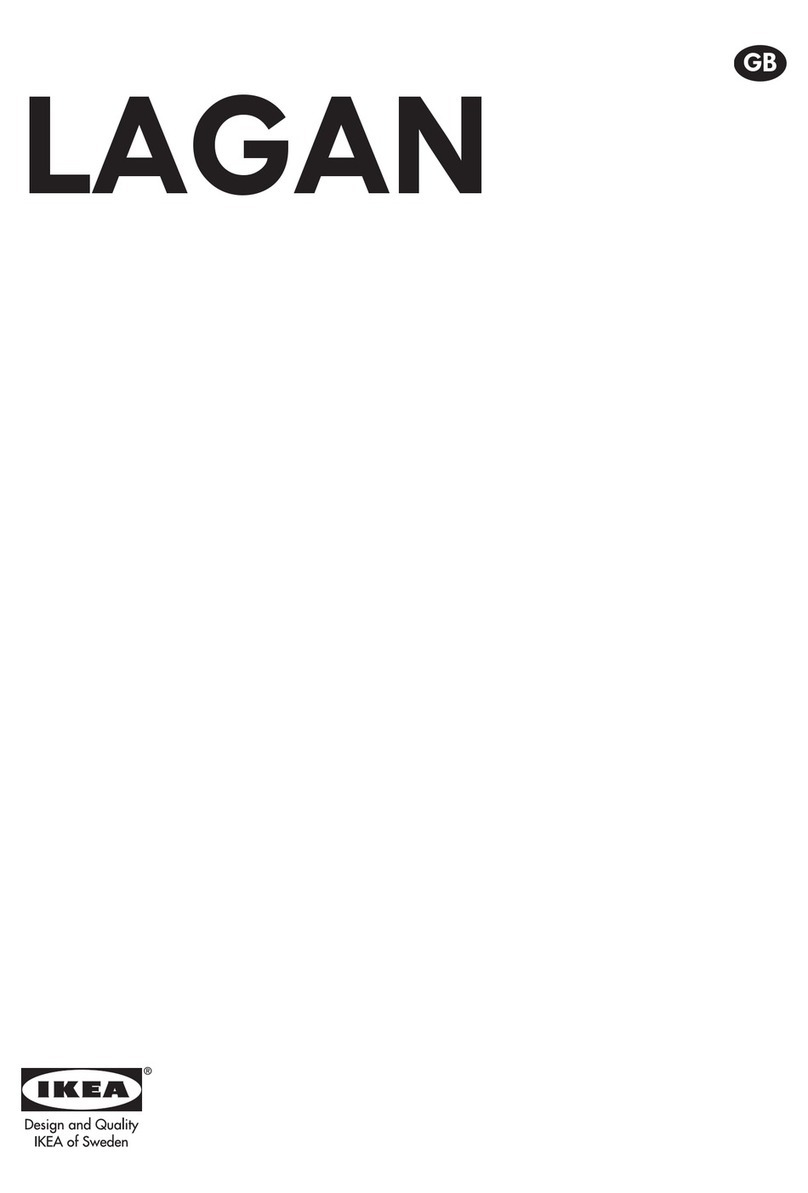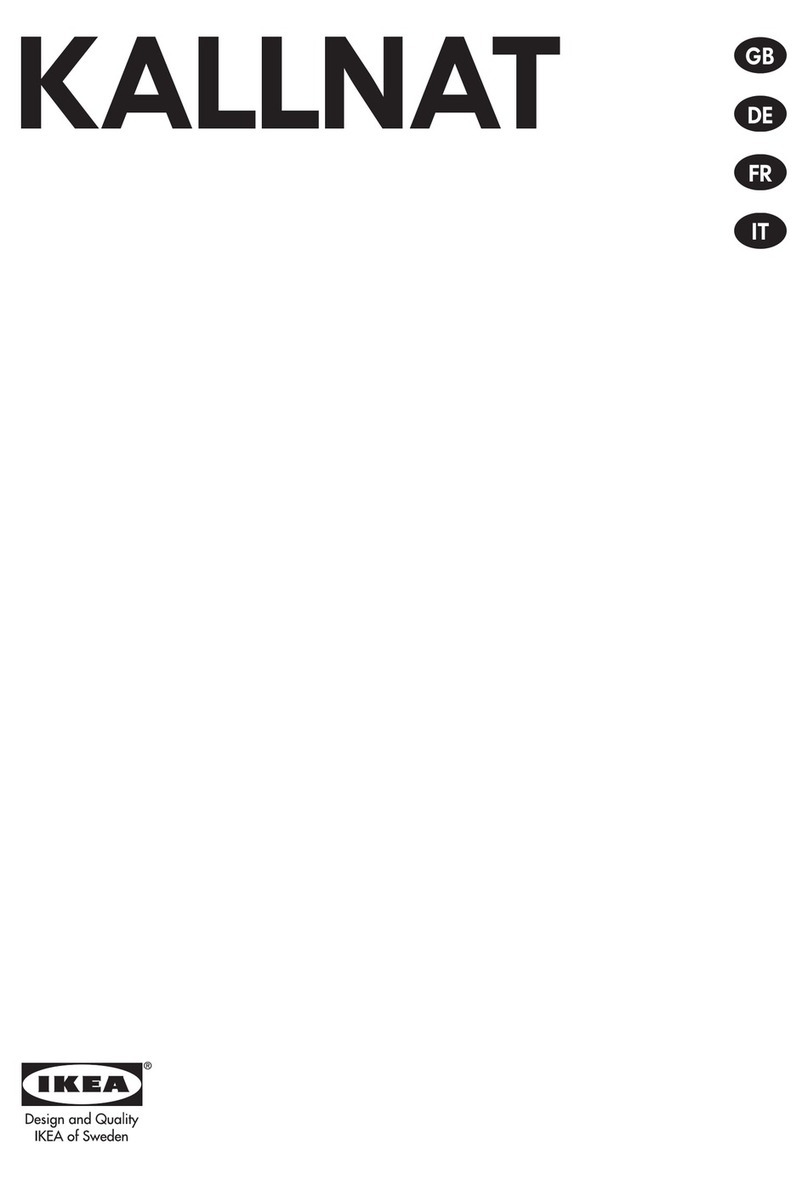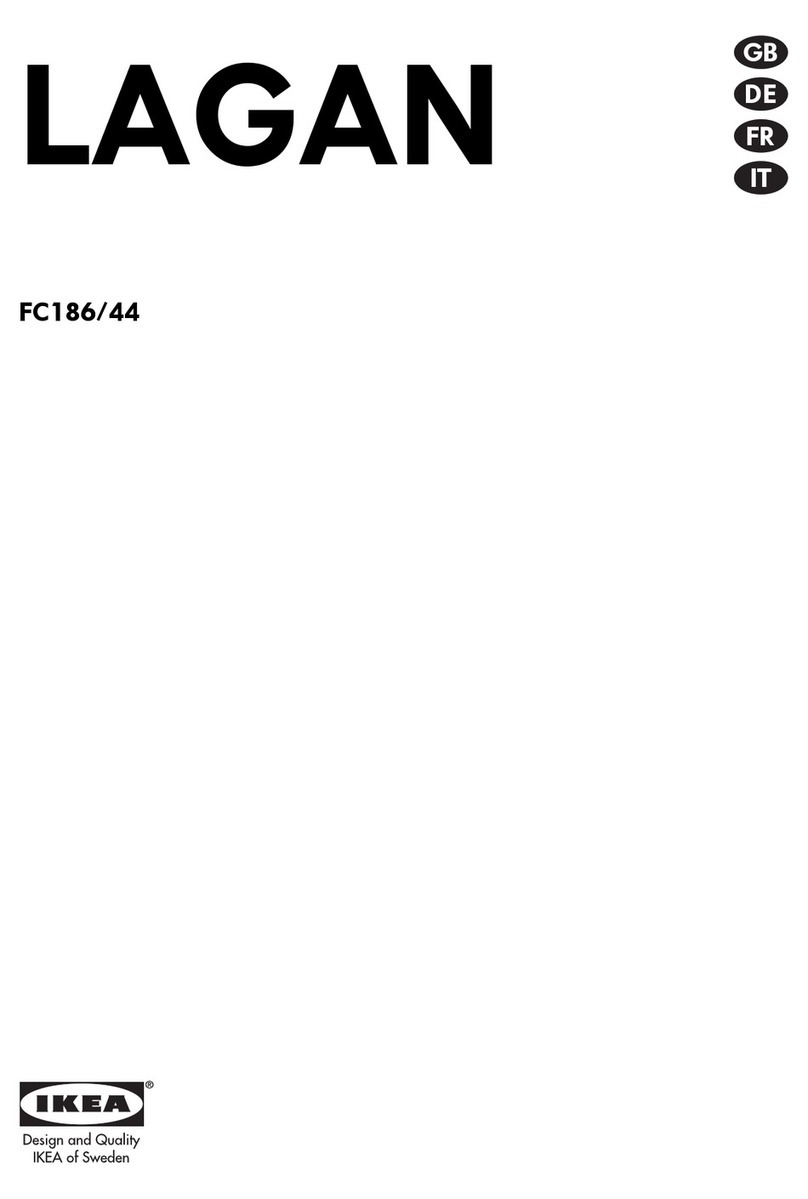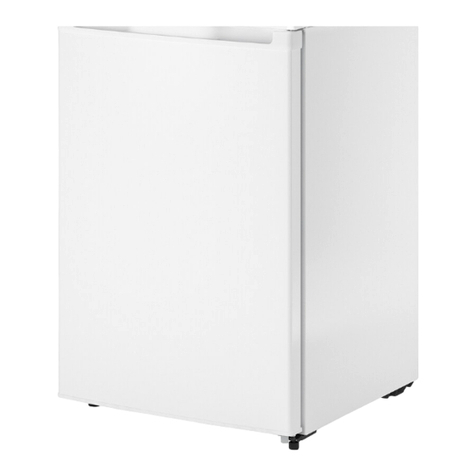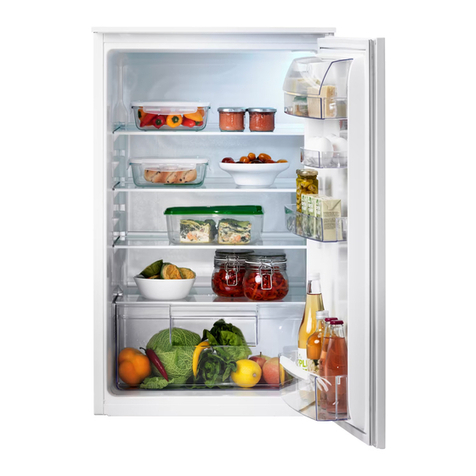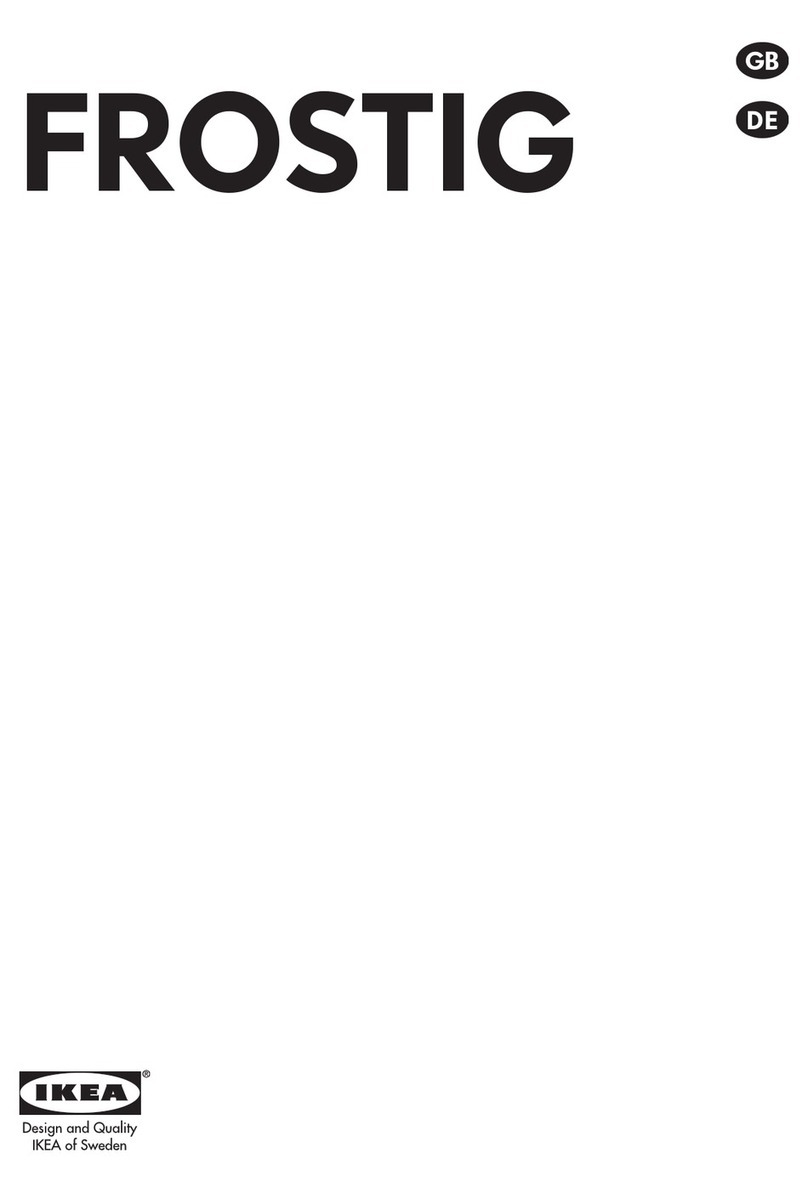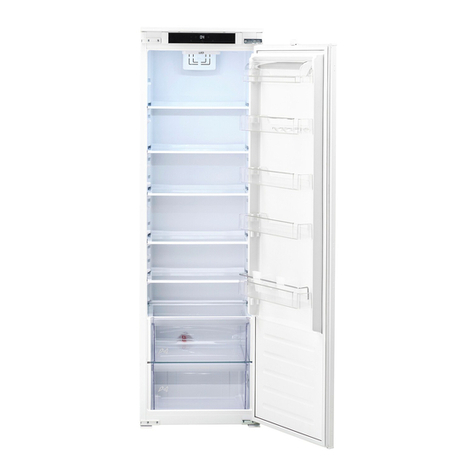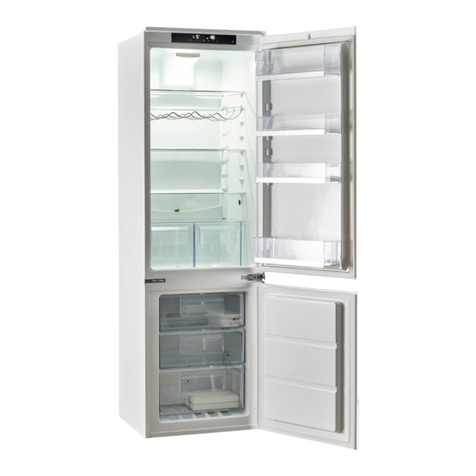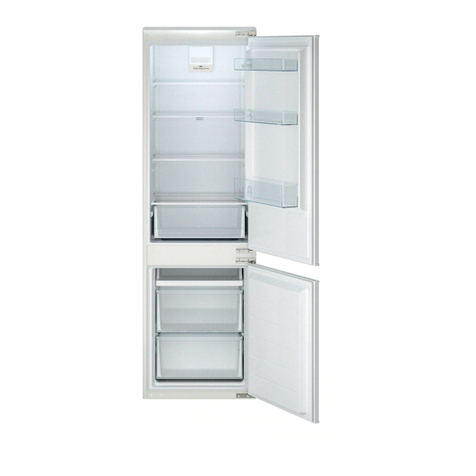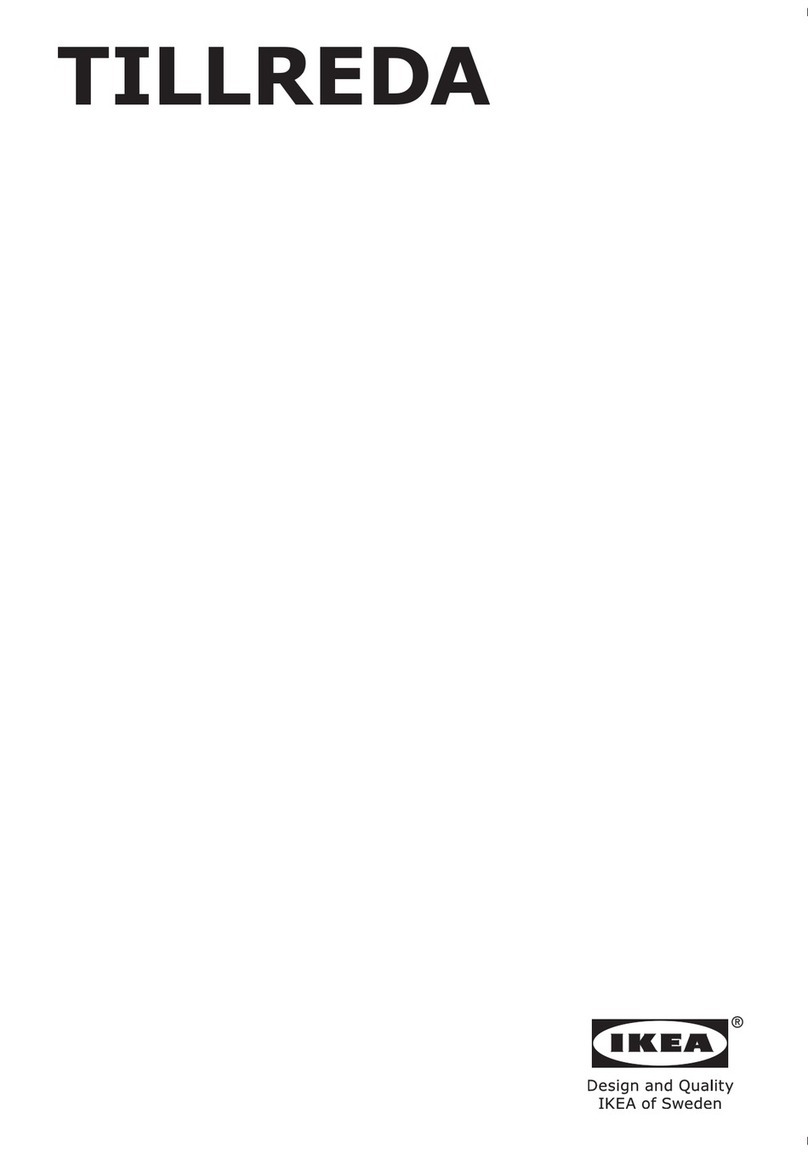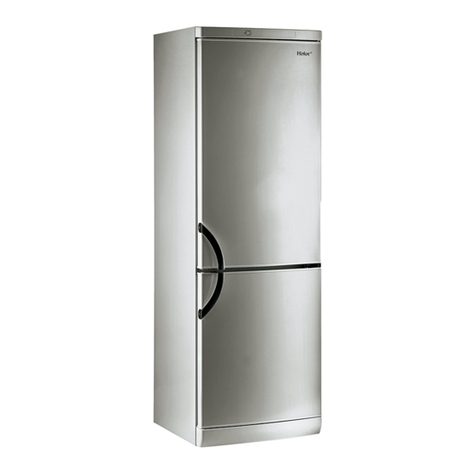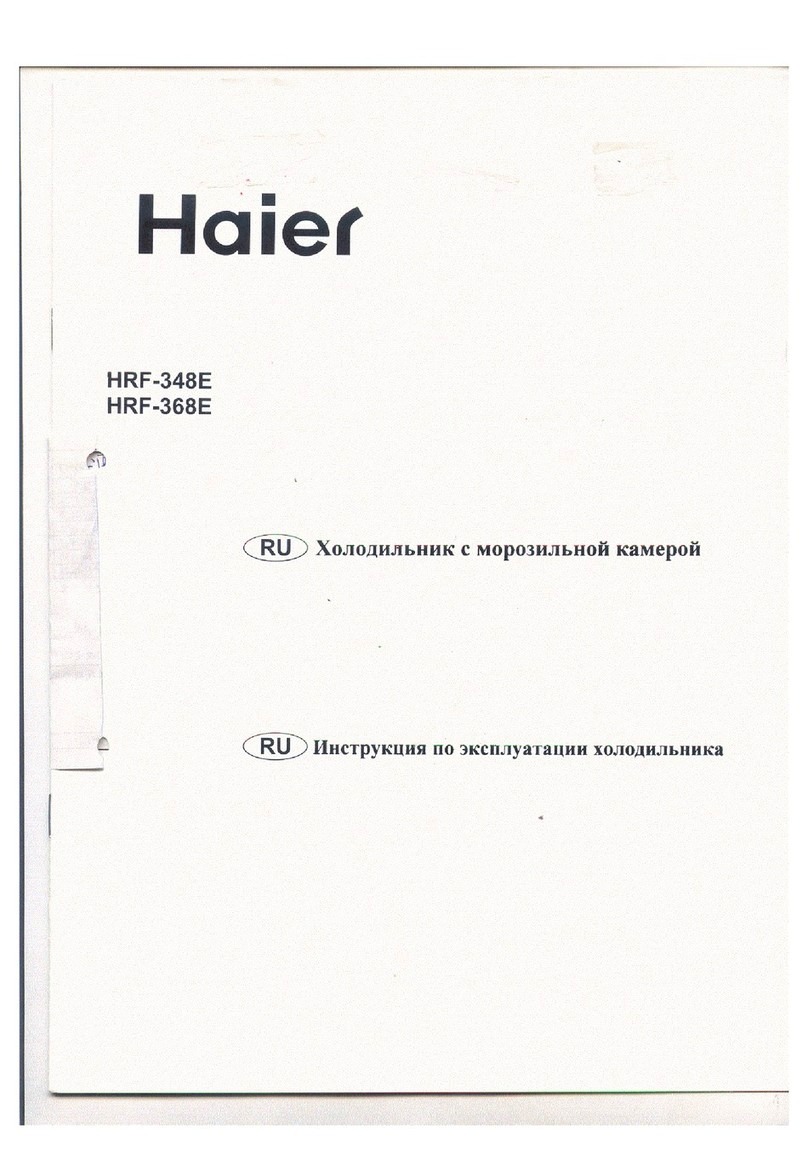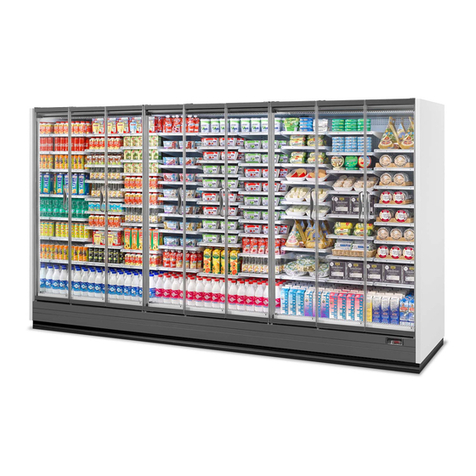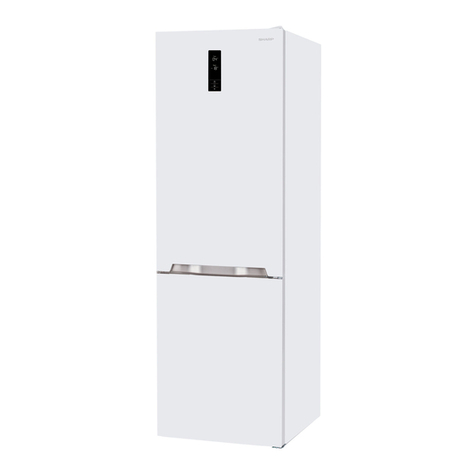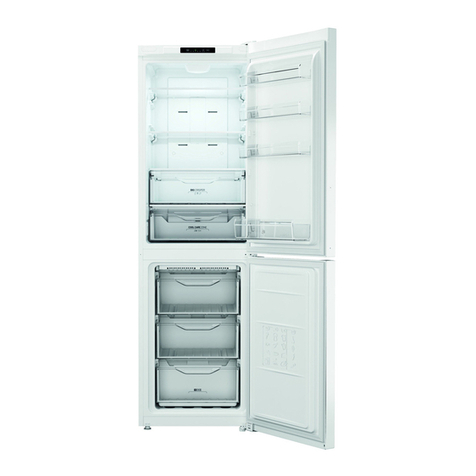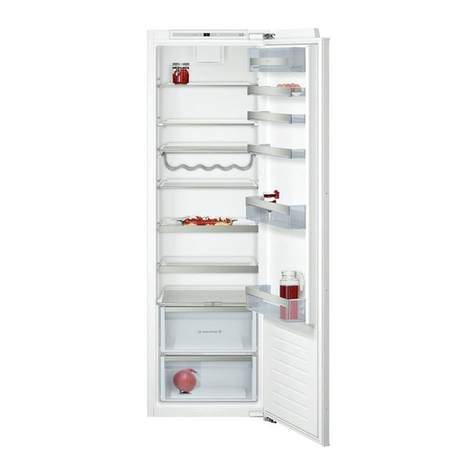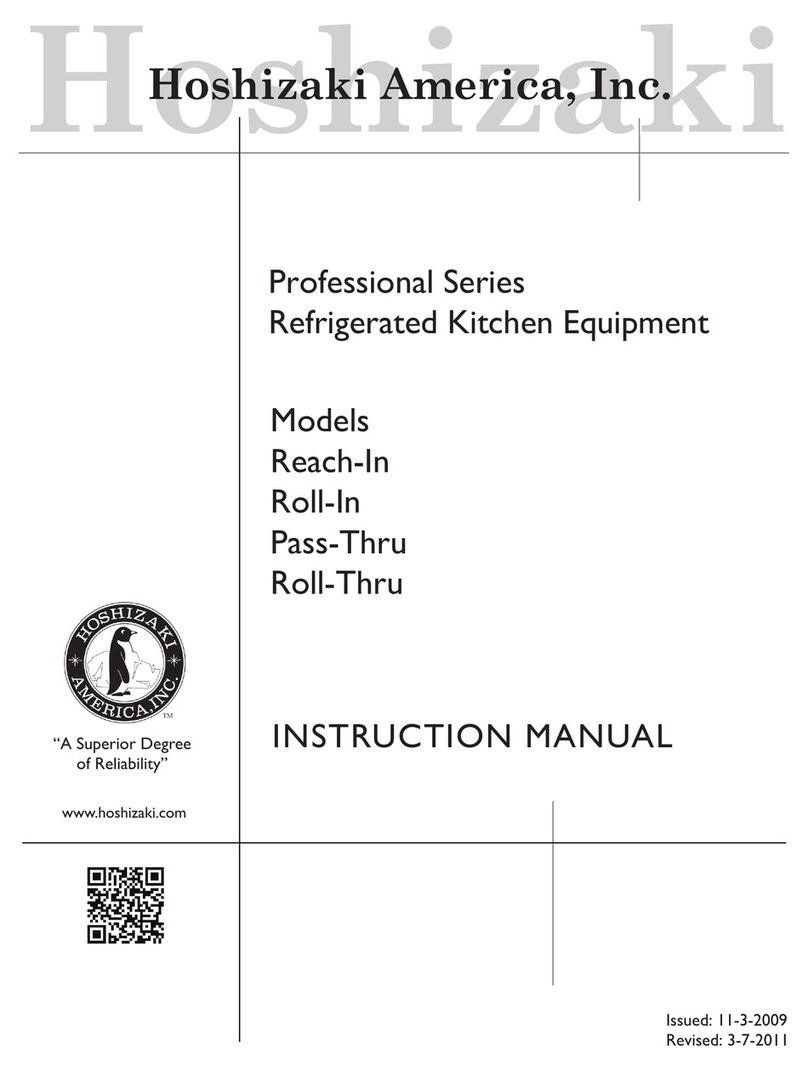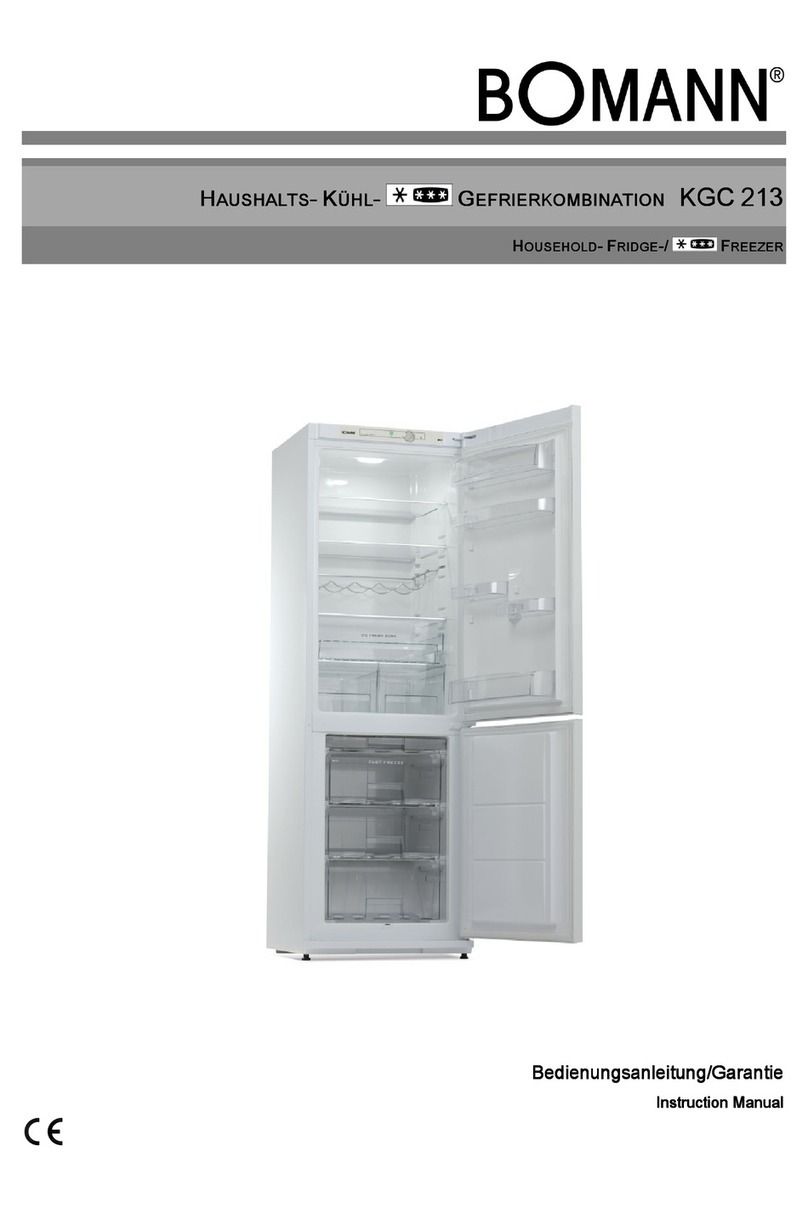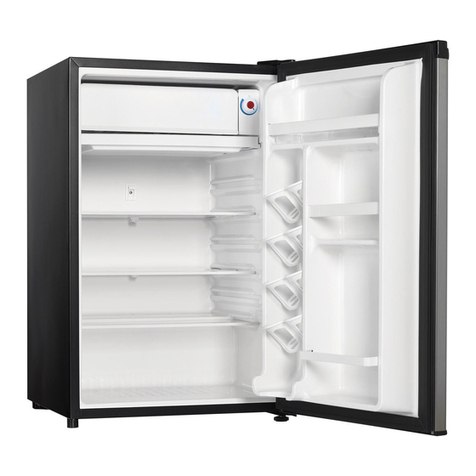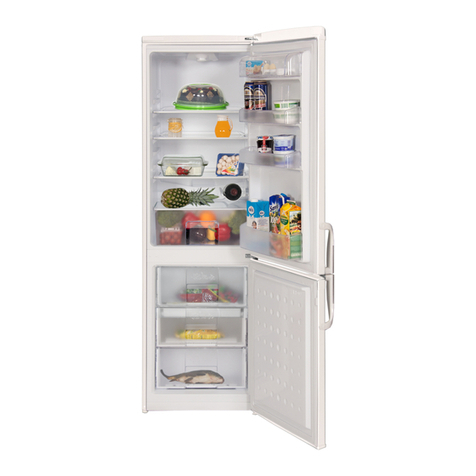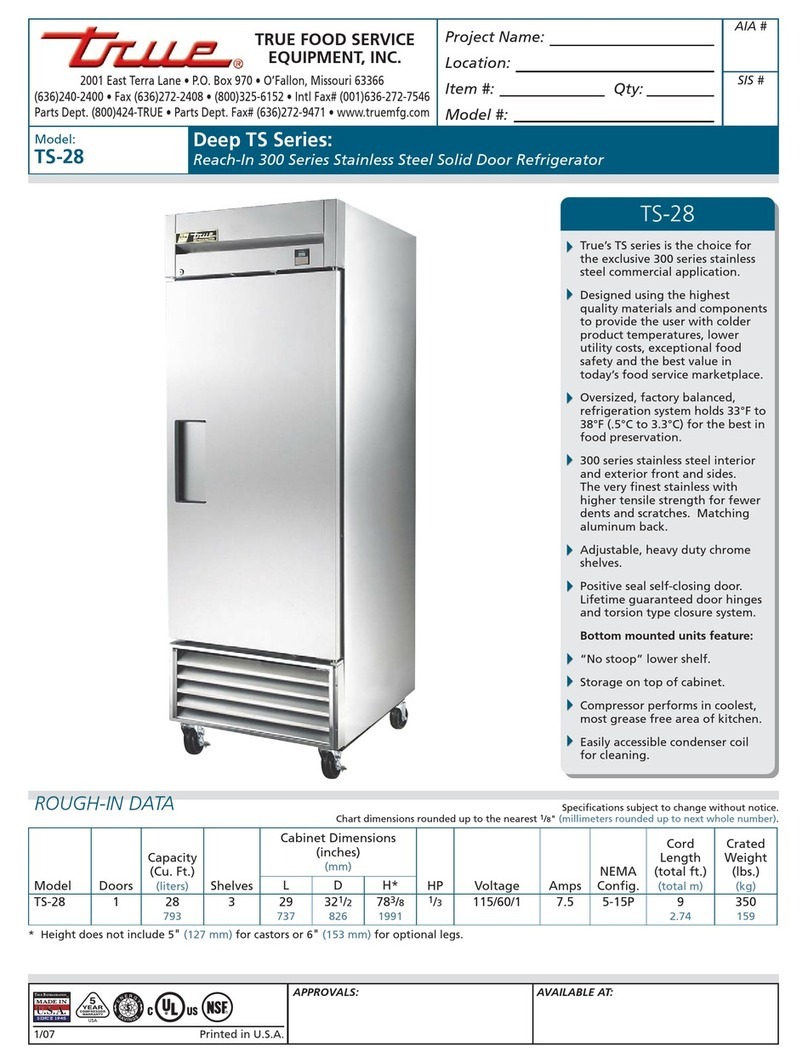
7ENGLISH
• WARNING: System contains refrigerant
under high pressure. Do not tamper with
the system. It must be serviced by qualied
persons only.
• DANGER: Risk Of Fire Or Explosion.
Flammable Refrigerant Used. Do Not Use
Mechanical Devices To Defrost Refrigerator.
Do Not Puncture Refrigerant Tubing.
• DANGER: Risk Of Fire Or Explosion.
Flammable Refrigerant Used. To Be Repaired
Only By Trained Service Personnel. Do Not
Puncture Refrigerant Tubing.
• CAUTION: Risk Of Fire Or Explosion.
Flammable Refrigerant Used. Consult Repair
Manual/Owner’s Guide Before Attempting to
Service This Product. All Safety Precautions
Must Be Followed.
• CAUTION: Risk Of Fire Or Explosion. Dispose
Of Properly In Accordance With Federal Or
Local Regulations. Flammable Refrigerant
Used.
• CAUTION: Risk Of Fire Or Explosion Due
To Puncture Of Refrigerant Tubing; Follow
Handling Instructions Carefully. Flammable
Refrigerant Used.
• WARNING: Fill With Potable Water Only.
• WARNING: Connect to potable water supply
only.
• WARNING: To avoid a hazard due to
instability of the appliance, it must be xed
in accordance with the instructions.
• WARNING: The refrigeration system is
under high pressure. Do not tamper with
it. Contact qualied service personal before
disposal.
Child safety
• Keep children away from packaging and its
parts. Danger of suocation from folding
cartons and cling wrap!
• Do not allow children to play with the
appliance!
• Destroy or recycle the carton, plastic
bags, and any exterior wrapping material
immediately after the refrigerator is
unpacked. Children should never use
these items to play. Cartons covered with
rugs,bedspreads, plastic sheets or stretch
wrap may become airtight chambers, and
can quickly cause suocation.
General Safety
• This appliance is intended to be used in
household and similar applications such as:
- Farm houses; sta kitchen areas in
shops, oces and other working
environments;
- By clients in hotels, motels, bed and
breakfast and other residential type
environments;
• Only original parts supplied by the
manufacturer should be used. Only original
parts satisfy safety requirements.
• Do not use electrical appliances inside the
appliance (e.g. heater, electric ice maker,
etc.). Risk of explosion!
• Do not use water spray and steam to clean
the appliance. The steam may penetrate
electrical parts and cause a short–circuit.
Risk of electric shock!
• Do not use pointed and sharp–edged
implements to remove frost or layers of
ice. You could damage sensitive internal
components, including the refrigerant
tubes. Leaking refrigerant may ignite or
cause eye injuries.
• Only store high-proof alcohol tightly closed
and standing up.
• Never cover or block the ventilation
openings for the appliance.
• Switch the appliance o prior to cleaning.
• Clean the appliance with a moist soft cloth.
Only use neutral detergents. Do not use
abrasive products, abrasive cleaning pads,
solvents or metal objects.
• Keep plastic parts and the refrigerator seal
free of oil and grease. Otherwise, parts and
the refrigerator seal will become porous.
• Do not stand on or lean heavily against the
base of the appliance, door, shelves etc..
Transportation
The appliance is heavy and must be handled
with caution during transportation and
installation. Because of the weight and
dimensions of the appliance, at least two
persons are necessary to move the appliance
into position securely and avoid injuries to
people or damage to the appliance.
Installation
Warning! Only a qualied person can
install this appliance.
• Remove all the packaging and the transit
bolts.
• Do not install or use a damaged appliance.

